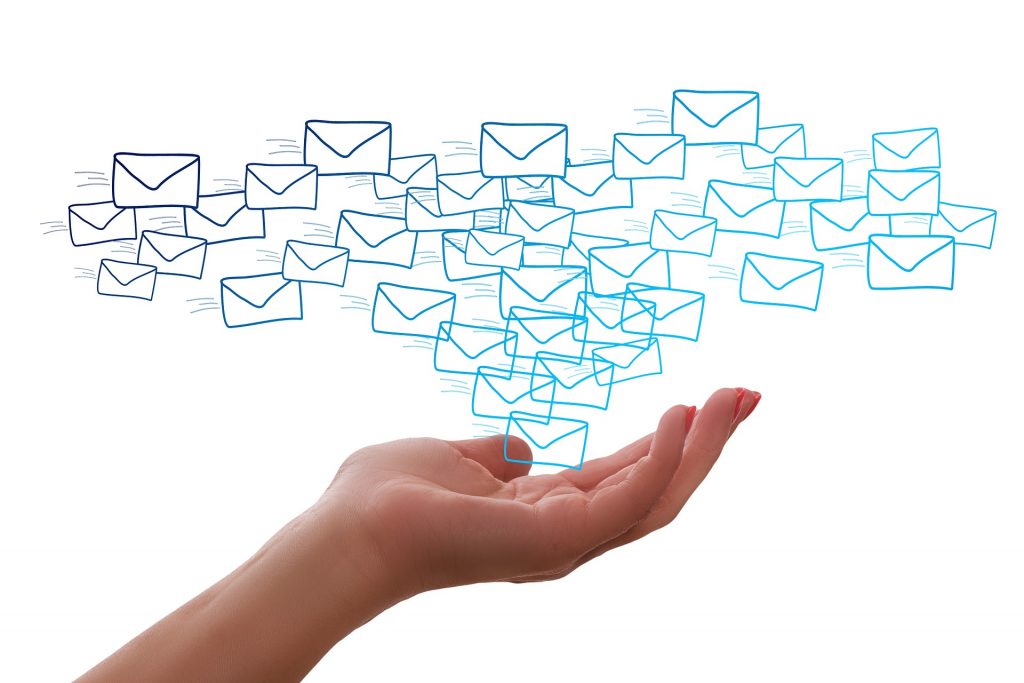
6 ways to build your email marketing list
Lead lists are generally hot topics among marketers and sales teams. A lot of focus is put into building email marketing lists and adding new names to the database.
But, are you struggling to actually build your email list?
Don’t go out and buy email lists! There are some easy ways to optimize your website to grow your marketable database without resorting to spamming people or ruining your email marketing reputation.
In this blog post, I’m going to cover six tactics you can use on your brand’s website to encourage signups and build out your email list in an organic and authentic way.
How to build your email marketing list

1. Lead magnets
AKA your bribe-to-subscribe content. This is the most common email list building tactic as you’re providing a direct trade-off for the lead’s contact information. They give you their email address, they get a free guide or webinar recording in exchange.
Check out my post on gated content to learn more.
2. Landing pages
Landing pages are probably the second most common tactic for list building. Landing pages may or may not have a gated resource, but they’ll have very specific information for a specific audience and then you could use a form on the page to help them on the next step of their journey, like emailing them an information bundle with everything they need to know about your product or service.
3. Sign up forms
There are two main options when it comes to adding sign up forms to your blog or resource content: end-of-post forms or inline forms.
End-of-post forms are exactly what they sound like, they’re forms at the end of a post which allow people to enroll right then and there after reading a great piece of content.
Inline forms are peppered into the content so people can quickly take action and then continue reading.
Do some A/B testing to see which form type works best for your audience and drives the most conversions.
4. Pop-ups
There are two common forms of pop-ups on brand websites: entry pop-ups and exit pop-ups. Entry pop-ups appear when a visitor first lands on your site – though a good rule of thumb is to wait at least five seconds before displaying your entry pop-up.
Pop-ups can be a great way to drive engagement as the user will have to either take action or close the pop-up to get back to the content they want to read.
The exit pop-up on the other hand is triggered when the user’s mouse moves toward the close or back buttons. These are often viewed as last-ditch efforts to engage a visitor and get their lead information, but I think the exit pop-up can be much more useful than an entry version.
By the time the person is exiting they’ll have formed an opinion about your brand and the quality of content and therefore more likely to engage. I know personally I get annoyed with entry pop-ups as I don’t know the brand yet. I’m not giving out valuable information like my email address right away. Woo me!
Like I said, some marketers view exit pop-ups as somewhat desperate but that all depends on how you approach your copy or what you’re offering. Your exit pop-ups could be structured to:
- Add value: Before you go, get your free copy of the guide to X, Y, and Z
- Be helpful: Didn’t find what you came for? We’re here to help…
- Give them pause: Leaving so soon? We have so much more to show you…
- Force engagement: Create a pop-up with two buttons, one that’s a positive option and one that’s negative. Like: Yes, I want to know the secrets to email marketing, or, No, I hate making good emails
- Show social proof: Join our community of 10,000 marketers…
5. Sidebar forms
Don’t want to mess with pop-ups? Add a form to the side of your website, in your footer, or use a banner at the top of the page to quickly let people sign up for emails or get their free eBook. Sidebars can be great as they’re constant and you don’t have to worry about annoying your users by taking over their screens.
6. Confirmation pages
We’ve all seen it: the automatic check mark next to the little line of text saying “sign me up for email updates and newsletters.” And it just happens to be checked already.
Give your customers the option to enroll in marketing emails on a confirmation page, thank you page, or as they’re checking out. Do some testing of your specific audience to see if they prefer having the work of checking the box done for them or if they want to actively choose to subscribe.
Sometimes the automated check mark can be a curse as people are signed up without meaning to and then you see a giant increase in your unsubscribe or worse, spam rates.

Email marketing CTAs
Before I wrap this blog post up, I do want to call special attention to the CTA (call-to-action) buttons you use in these different placements.
We’re all used to seeing the submit and sign up buttons, but why not have some fun with your CTAs to improve people joining your email list?
Instead of using boring language, try:
- Use first-person wording: Tell me more, Sign me up, Send me the details, I want in, etc.
- Use verbs: Discover, Explore, Access, Experience, Become, Understand, Share, Collect, Choose, Meet, etc.
- Add time: Save now, Join today, Get immediate access, etc.
Finally, set expectations in your copy. Are they enrolling in an email series about X? Tell them. Are they going to get an information bundle about Y? Let them know what to look forward to and why they should look forward to seeing your brand’s name in their inbox.
Did I miss any tips on building email marketing lists? Tell me your top tips in the comments below!




